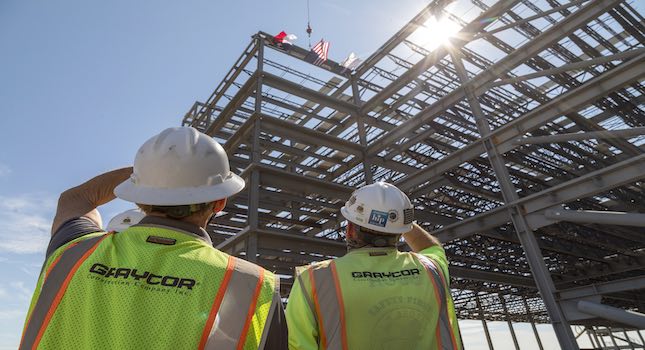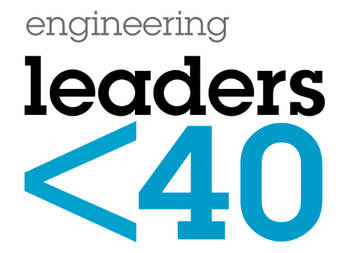Mitigate volatility, uncertainty, complexity and ambiguity with early contractor involvement

Learning Objectives
- Learn the definition and origin of “VUCA.”
- Understand the wide range of factors impacting capital projects.
- Find out why it’s important for project owners, engineers and contractors to work in concert to address the issues and challenges facing capital projects.
VUCA insights
- Volatile, uncertain, complex and ambiguous (VUCA) was previously a term used in leadership and management practices.
- VUCA now relates to the construction world, specifically related to project delivery methods.
Leaders of firms are responsible for making project decisions that keep capital projects on track in a construction environment rife with economic, political, labor, supply chain and materials challenges — just to name a few. These decisions are being made in an increasingly volatile, uncertain, complex and ambiguous (VUCA) world. VUCA describes the situation of constant, unpredictable change that is indicative of the environment in construction.
Based on the leadership theories of authors Warren Bennis and Burt Nanus, the term VUCA was first used in 1987. Later, the term was embraced by the U.S. Army War College to describe the military challenges in a post-Soviet era. Military leaders no longer had a single enemy on which to focus but faced a multitude of threats that required new ways of thinking, seeing and reacting.
While VUCA challenges can complicate decision-making when constructing plant facilities, embracing collaborative, creative communication and a flexible approach will reduce risk and result in predictable project outcomes.

Collaboration enhances project delivery despite VUCA challenges
Manufacturing and industrial facilities are inherently complex, time-consuming and expensive to construct. If building teams implement early planning to identify big-picture issues, developers can be profitable despite VUCA challenges in a market that currently is underserved.
One of the most effective project delivery methods for project success in a VUCA construction environment is early contractor involvement (ECI), which brings contractors into the project planning process before the design phase is complete. Getting involved early informs the contractor’s strategy, which results in more predictable project outcomes and more accurate pricing, mitigating any upfront costs associated with ECI.
Additional advantages include faster permitting, fewer change orders and better regulatory compliance. It’s also easier to stay on schedule and meet project deadlines with ECI because the construction process is streamlined and shortened — even though the tendering period may be longer than projects completed with more traditional delivery methods like design-bid-build.
Transparency in all project areas is key to achieving competitive pricing despite industry uncertainty. Experienced ECI firms focus on careful management and proper sequencing, requiring agreement among parties before moving to the procurement stage, as well as having separate value engineering efforts to keep design alternatives focused.
ECI contractors also create a detailed risk mitigation plans to navigate uncertainty. The project team can use risk registers to identify areas of risk, determine the odds of impact and develop proactive mitigation strategies to limit or eliminate the effect on project outcome.
Risk registers communicate risk to all project partners early, giving teams the opportunity to address risk through all phases of a manufacturing project. Thoughtful development and consistent review and update of the project risk register will reveal challenges and threats, opportunities for improvement and areas that may require additional planning to respond to the uncertainty. Following this process can give the project team and investors assurance that they recognize areas of uncertainty and have a plan to bring predictable outcomes to a project despite working in a VUCA environment.
Teamwide perspectives improve project outcomes
ECI brings all project stakeholders to the table at the design concept or schematic phase, which achieves an active, instead of reactive, approach to a manufacturing project. Giving all team members a seat at the table taps into the expertise of all involved parties, who contribute unique perspectives, ideas, approaches and solutions to constructability. These perspectives can identify potential future challenges and determine solutions to address those challenges before they occur.
For example, ECI contractors may be able to achieve early commitment for procurement of critical materials, as well as work with designers to ensure materials ordered will match the requirements of the completed manufacturing project design. A contractor that has existing relationships with vendors, subcontractors and suppliers may be able to secure holds based on letters of intent — despite hold times for prices or shop availability being much shorter than they have been in the past.
Open communication throughout the construction team will help manage the risk of material delivery delays — an all-too-common occurrence in this VUCA environment. With open communication, the team will be able to react quickly and determine alternative solutions to keep the project on schedule and slow the flow of spending. Transparency is key to addressing challenges and maintaining success during uncertainty.
Running scenarios and choosing supply alternatives also may be required to keep a project budget on track in a VUCA world. While it would be impractical to select entirely different critical path materials for a given job, it is a good idea to compare materials costs to installation methods. Open communication with all team members will help identify alternatives.
The construction team can further mitigate challenges in materials and the supply chain by leveraging relationships with vendors. Vendors can bring transparency and reality to what the team should expect with material procurement during pre-planning and as the project progresses. If a challenge in material procurement arises, vendors can offer alternates by looking at the bigger picture. Though alternates may have a higher upfront cost, they may save money over their lifecycles by being more efficient to the future plant operator.
Planning and addressing the availability of these materials — and considering substitutions when necessary — can make a significant difference in the project schedule and lead to project success in a VUCA construction environment.
Early contractor involvement can reduce VUCA
Several strategies exist for owners and project teams to mitigate barriers to collaboration. By choosing an experienced ECI contractor, owners can ensure adequate technical support and proper responsibility allocation. For participants who are suspicious of change, lack respect for other project participants or don’t understand the benefits of the project delivery method, the ECI firm can hold open conversations with the team and individual team members to help ease concerns and gain their trust.
When done properly, ECI can reduce friction among project stakeholders and harness collaborative attitudes, fostering positive relationships early and leading to a successful construction process.



